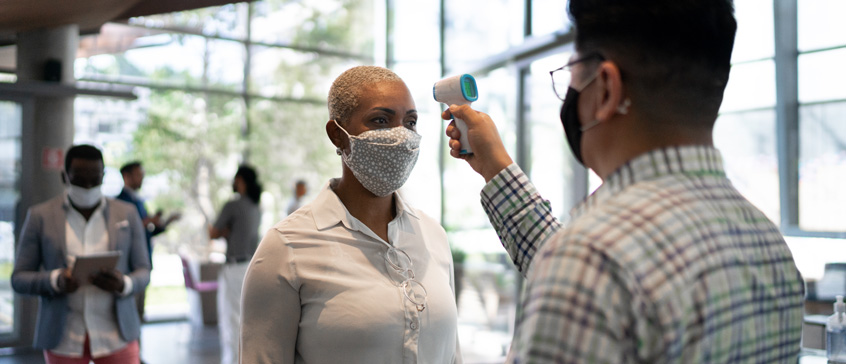Home / Continuing Studies News / An ethical return to work
An ethical return to work

By Maryjane Martin, MS, APR, FCPRS, an instructor in the Public Relations diploma program
In early July, Leger 360, a leading Canadian market research company, reported 51% of Canadians are finding it stressful to leave their house and be in public. And the fear of contracting the coronavirus continues to trend upward among Canadians. Similarly, in the U.S., a recent CBS News poll found more than half of all employees lack the confidence to return to their offices or worksites.
While the majority of businesses in Canada have been financially impacted by the COVID-19 pandemic, Statistics Canada has found small businesses have been hit particularly hard by this crisis. Employers are therefore desperate to get their businesses back to some semblance of pre-pandemic days.
How do corporate communicators, working on communicating the transition back to work, ensure we are being ethical in our communication to colleagues while meeting our obligations to our employers?
In a recent CBC interview, Howard Levitt, a Toronto-based employment and labour lawyer, said, "There's really no choice. If it's a safe workplace, the employee has to go back to work."
The law may be clear but the court of public opinion on this issue may not be. While we have been successful at flattening the curve, COVID-19 is still present in our communities and social distancing in our workplaces will remain for some time.
The Canadian Public Relations Society has a Code of Professional Standards that provides some direction to help practitioners facing difficult issues. Two aspects of the code are applicable here:
- A member shall deal fairly and honestly with the communications media and the public.
- A member shall practice the highest standards of honesty, accuracy, integrity and truth, and shall not knowingly disseminate false or misleading information.
So, communicators need to confirm with their employer – is the workplace ready for a safe return to work (daily office cleaning and sanitation in place; sanitation stations in the office; social distancing in place; are face masks required; etc.)? To maintain trust, your communications must be clear and factual.
Also, are companies being true to their corporate values of diversity and inclusion if they are not recognizing employees' concerns for their safety? What can communicators do to alleviate their fears?
As a public relations practitioner you will be faced with the need to make moral decisions regarding small and large communication matters – just like this one – on a regular basis. A systematic approach to making decisions will allow consistency in your decision-making and ensure that you can defend your decisions.
Why is this important? At the recent Canadian Public Relations national virtual conference, CEOs of some of Canada's largest PR agencies indicated a key skill they were looking for in new hires was ethical decision making.
In our Ethics and Public Relations course (HPPR428) we look at a wide variety of ethical decision-making models available to help you make solid ethical public relations decisions. And while there is no one right model, we're sure you'll find a model that suits you.
- Posted September 22, 2022
Visit Registration
2nd Floor | Continuing Studies Building University of Victoria Campus 3800 Finnerty Road | Victoria BC | CanadaTel 250-472-4747 | Email uvcsreg@uvic.ca
2026 © Continuing Studies at UVic
Legal Notices |
Sitemap

